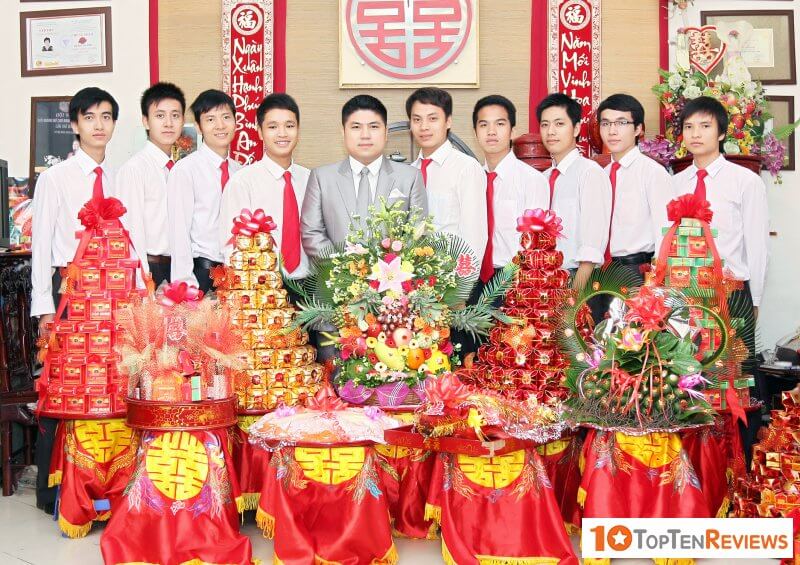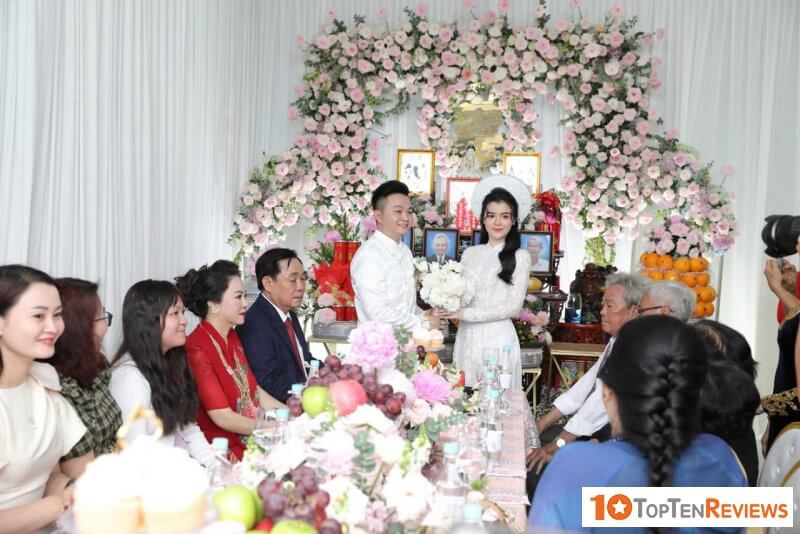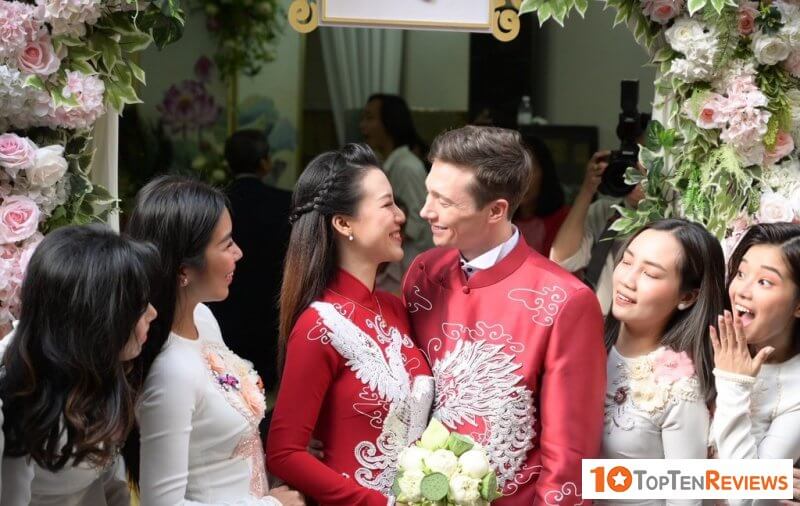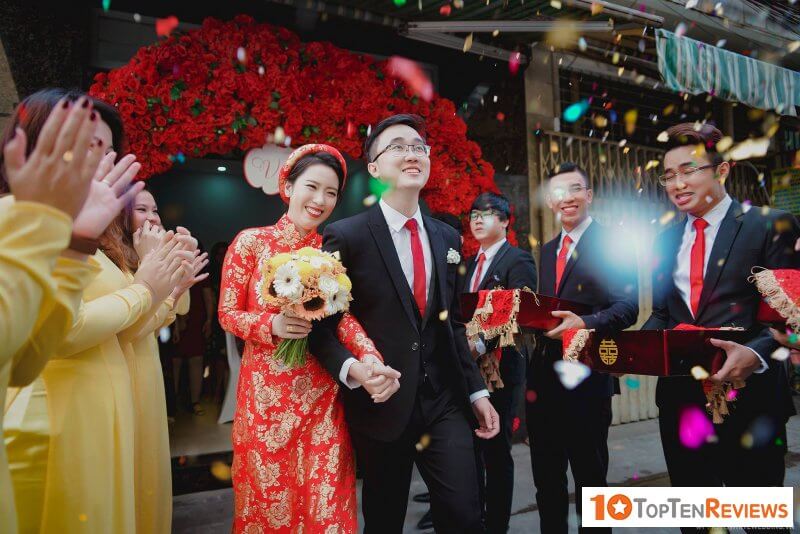When you visit Vietnam and learn the roots of any rituals there, you will more appreciate this land. Learn more about the essence of Vietnamese weddings below to know more about a country full of traditional beauty.
Proposal ceremony
The proposal ceremony is an essential part of the traditional wedding ceremony in Vietnam to formalize the marriage relationship of two families. It is no longer as complex as the old days but is just a meeting between two families, showing their agreement to hold an official wedding ceremony.
On this day, the groom's family goes to the girl's house to officially ask for the couple to be free to communicate and continue the process of getting to know each other more carefully before coming to a marriage decision.
After the ceremony, the daughter is considered to be a part of the groom's family.

Engagement ceremony
The engagement ceremony is the official announcement of the two families. Although many rituals have been reduced, the engagement ceremony is still maintained during a wedding ceremony in Vietnam.
It marks a significant turning point in the marriage relationship: The woman in question has officially become the man's fiancé.
The offerings of the engagement ceremony are areca, nuggets, tea, wine, concubine cakes, money envelopes, roasted pigs, fruits, etc. They are to express the groom's family's gratitude for their woman's parents' upbringing.
Depending on the region's custom, the number of fruit trays in the engagement ceremony may be even or odd. People still have the habit of choosing an even number, symbolizing the meaning of having a couple.

Welcoming the bride to the wedding ceremony
Before the time to welcome the bride to the wedding ceremony held in the groom's house, the groom's mother and a family member will go to the bride's house to bring betel nut and wine bottle to herald the arrival of the bride-to-be. The bride's family can rest assured to prepare for the reception.
No matter what means of transport the bridegroom's procession goes by, it must "correct the formation" before entering the bride's house.
In the procession of the bride, the first position of the delegation is usually the representative of the groom's family, followed by the groom's father, the groom, and his friends. The procession of the bride should have a compact formation so that everything goes faster and more comfortably.

After entering the girl's house, the groom's family is invited to sit down. The two sides introduced each other. After tea, the groom's family's representative stood up and said a few words to the girl's family to officially receive the bride.
When allowed by the grandparents, the groom enters the inner room to give flowers to the bride, and the bride goes to the altar to burn incense sticks and then greets parents and relatives on both sides. The bride is now in the formal traditional Ao Dai.
The bride's parents instruct the young couple on how to live, love, and marital ethics. Then the representative of the groom's family will answer on behalf of the groom and ask to bring the bride to the car. The bride's family will follow the flower car to the boy's house to attend the wedding party.
Arriving at the groom's house, their parents lead the bride and groom to the altar to burn incense for the ancestors (anniversary ceremony). After that, they greet the relatives in the husband's home. Then the groom's family invites the bride's family and all the people to attend the wedding party.

Present ceremony
After the wedding day, the mother-in-law will prepare a small ceremony tray for the couple to bring back to the bride's house. This ceremony is also known as the second celebration. The couple returns to the bride's home from 1 to 4 days after the wedding ceremony.
The time will depend on the geographical distance between the two houses and the conditions of the young couple. Usually, the ceremony takes place in the morning, rarely visiting the girl's house in the evening or late afternoon.

These rituals have a long history and are considered a beauty in traditional wedding culture. Nowadays, you will easily find there are combinations and streamlining.
